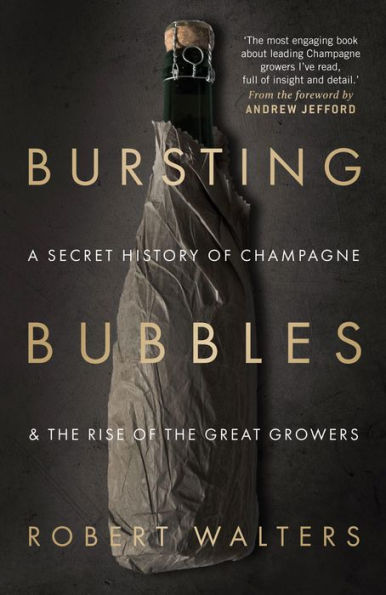Table of Contents
CONTENTS
Disclaimers Where the author preempts several lines of criticism, comes clean about his motivations and forewarns the reader that he is not without self-interest 10
Prologue In which a wine traveller has an encounter with a Champagne from another planet and lets the reader in on a little secret 13
Part I Where we follow sparkling Champagne’s remarkable metamorphosis from faulty to fabulous 21
Myth I In the name of the father: Dom Pérignon was the father of Champagne 30
Part II In which we drive along a haunted racetrack in search of a singular grower and discover, not for the last time, that all is not what it seems in the world of Champagne 33
Part III Where we meet the revolutionary parents of modern Champagne – science and industry 47
Myth II First place: Champagne was the original sparkling wine 52
Part IV In which the author travels to the mountain to meet the rock of Ambonnay, tries to get blood from a stone and ends up leaving on better terms than when he arrived 55
Myth III The good and the great: Grand cru vineyards produce the best wines 68
Part V Where we head to ‘Rahnse’ to visit the cathedral and then travel south to Épernay, for a stroll down the legendary Avenue de Disney 69
Myth IV Silver spoon: Placing a spoon in the top of a Champagne bottle helps preserve the bubbles for longer 77
Part VI In which the wine traveller drives south from Épernay to Avize and discovers that all that glitters is not gold 79
Part VII Where we encounter more threats to Champagne’s ‘Great Wine’ pretensions and find out what conventional Champagne has in common with baked bread, roasted nuts and seared steak 91
Myth V Holy Trilogy: Only three grape varieties are used to make Champagne 98
Part VIII In which we pay a visit to Pascal Agrapart, and where the authoracknowledges that he can sometimes miss what is right under his nose by playing the man and not the ball 101
Part IX Where we unearth even more image problems for Champagne (by comparing the ‘approach Champenois’ with best practice in Burgundy) and where we also learn that the English are the necrophiliacs of the wine world 113
Myth VI Blending is better: Champagne is blended in order to produce a better balanced, better quality wine 119
Part X In which the author tries to comprehend Anselme Selosse via a blend of pop psychology and historical minutiae and then plays word games with the man himself 123
Part XI Where we blend a few things together in order to produce a histoire vraie of Champagne and then explore the extent to which brand has come to dominate land in this famous region 135
Myth VII Simple fizzics: Where bubbles come from 143
Part XII In which we head south to Vertus and visit a great grower making ‘crazy wine’ in order to remind ourselves, once again, that Champagne is a wine, first and foremost 145
Part XIII The continuation of our histoire vraie, where the author views advanced capitalism through the rosiest of glasses and perhaps takes the friendship too far by comparing the history of Champagne to that of Camembert and free-range chicken 159
Myth VIII The shape of things to come: Champagne should be served in flutes 163
Part XIV In which we travel from Vertus to the historic market city of Troyes, all the while grappling with the ideologies of Champagne’s separatists 165
Part XV Where the author discusses the problems with the term ‘grower revolution’ and then offers the reader a choice between two radically different worlds of Champagne 171
Part XVI In which we visit our first Aube grower and learn what it means to be an outsider in your own wine region 179
Part XVII The final instalment of our histoire vraie, where the true grower revolutions are revealed – and yes, there were more than one 191
Myth IX In the beginning: Champagne is mentioned in the Bible 195
Part XVIII In which we visit a vigneron farmer – or is that a farmer vigneron? 197
Part XIX Where we delve into the remaining key factors that led to the development of Champagne’s current batch of great grower-producers 207
Myth X Bursting bubbles: Smaller bubbles are a sign of a high-quality Champagne 212
Part XX In which we visit the last of our growers in the Aube and learn that, no matter how seriously we take it, wine’s main work is to make us happy 215
Epilogue A short manifesto in which the author asks you, the wine lover, a simple, somewhat rhetorical question: ‘What sort of Champagne do you really want to drink?’ 223
Notes 229
Acknowledgements 237
Bibliography 238
Index 23



